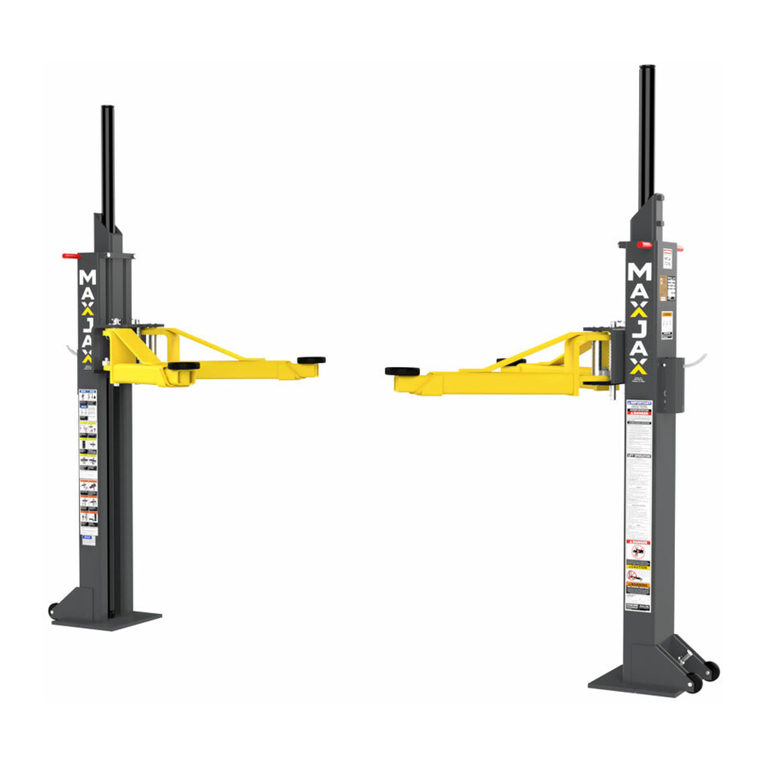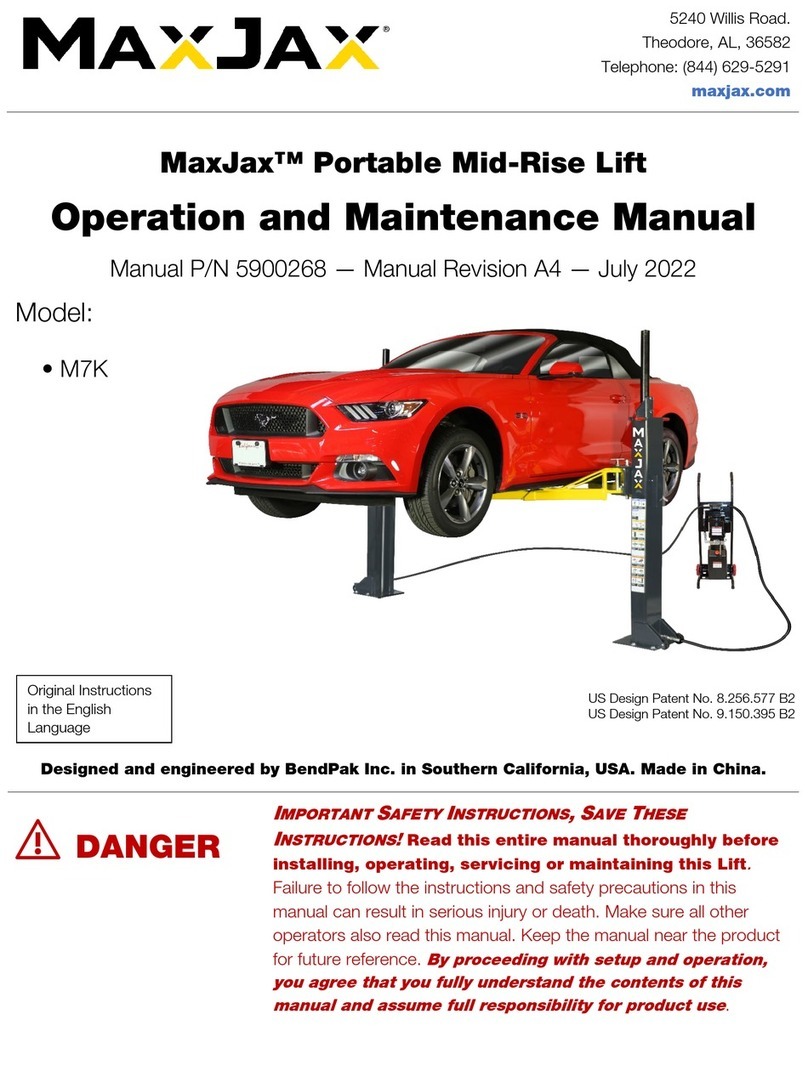
5
SAVE THESE INSTRUCTIONS
OWNER / EMPLOYER RESPONSIBILITIES
• Shall ensure that lift operators are qualied and that they are trained in the safe use and operation of the lift using the
manufacturer’s operating instructions and regional requirements.
• Shall establish procedures to periodically inspect the lift in accordance with the lift manufacturer’s instructions and
regional requirements. The Employer Shall ensure that lift inspectors are qualied and that they are adequately
trained in the inspection of the lift.
• Shall establish procedures to periodically maintain the lift in accordance with the lift manufacturer’s instructions and
regional requirements, Inspection and Maintenance and The Employer Shall ensure that lift maintenance personnel
are qualied and that they are adequately trained in the maintenance of the lift.
• Shall maintain the periodic inspection and maintenance records recommended by the manufacturer and regional
requirements.
• Shall display the lift manufacturer’s operating instructions; ALI/SM 93-1, ALI Lifting it Right safety manual; ALI/ST-10
ALI Safety Tips card; in a conspicuous location in the lift area convenient to the operator.
• Shall not modify the lift in any manner without the prior written consent of the manufacturer or regional requirements.
• Shall provide necessary lockout/ tagout means for energy sources per ANSI Z244.1-1982 (R1993), safety require-
ments for the lockout / tagout of energy sources, before beginning any lift repairs.
INSTALLER /OPERATOR: PLEASE READ THE ENTIRE CONTENTS OF THIS MANUAL PRIOR TO INSTALLATION
AND OPERATION. BY PROCEEDING WITH LIFT INSTALLATION AND OPERATION YOU AGREE THAT YOU FULLY
UNDERSTAND AND COMPREHEND THE FULL CONTENTS OF THIS MANUAL. FORWARD THIS MANUAL TO ALL
OPERATORS. FAILURE TO OPERATE THIS EQUIPMENT AS DIRECTED MAY CAUSE INJURY OR DEATH.
• I have visually inspected the site where the lift is to be installed and veried the concrete to be in good condition and
free of cracks or other defects. I understand that installing a lift on cracked or defective concrete could cause lift failure
resulting in personal injury or death.
• I understand that a level oor is required for proper installation and level lifting.
• I understand that I am responsible if my oor is of questionable slope and that I will be responsible for all charges
related to pouring a new level concrete slab if required and any charges.
• I understand that Dannmar lifts are supplied with concrete fasteners meeting the criteria of the American National
Standard “Automotive Lifts Safety Requirements for Construction, Testing, and Validation” ANSI/ALI ALCTV-2008, and
that I will be responsible for all charges related to any special regional structural and/or seismic anchoring require-
ments specied by any other agencies and / or codes such as the Uniform Building Code (UBC) and / or International
Building Code (IBC).
• I will assume full responsibility for the concrete oor and condition thereof, now or later, where the above equipment
model(s) are to be installed. Failure to follow danger, warning, and caution instructions may lead to serious personal
injury or death to operator or bystander or damage to property.
• I understand that Dannmar lifts are designed to be installed in indoor locations only. Failure to follow installation in-
structions may lead to serious personal injury or death to operator or bystander or damage to property or lift.





























